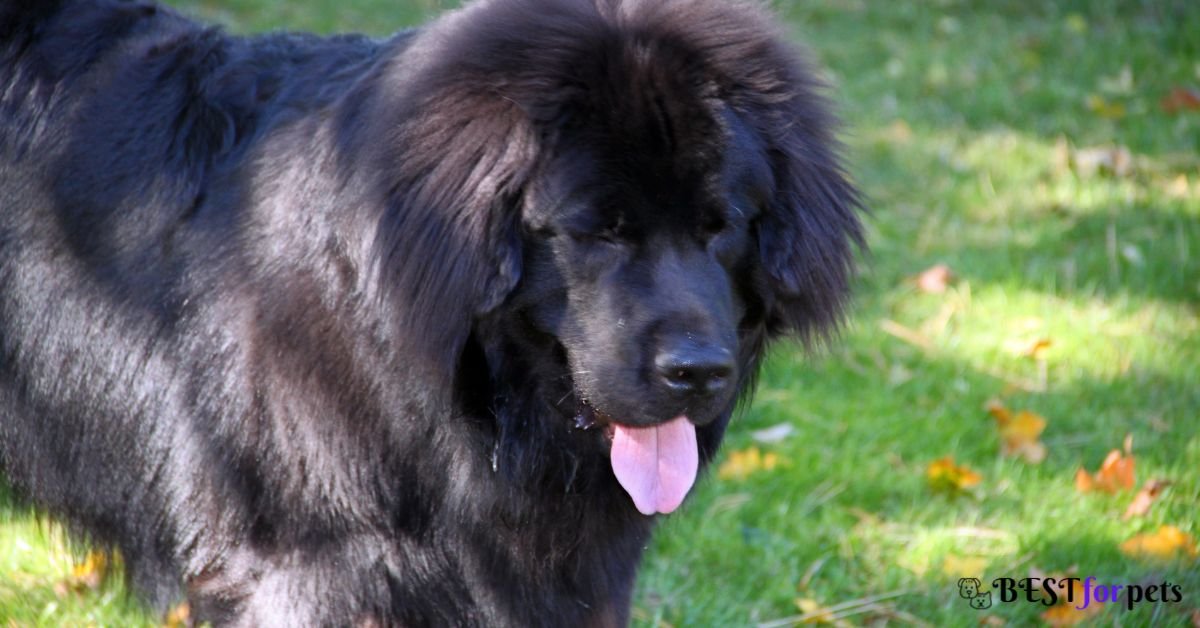Newfoundland Dog Vs Saint Bernard
Newfoundland Dog Vs Saint Bernard: History and Origins
Newfoundland Dog The Newfoundland dog has a rich history that can be traced back to the island of Newfoundland in Canada. They are believed to be descendants of the Great Pyrenee’s dogs brought to the island by European fishermen in the 15th century.
The breed’s development was influenced by interbreeding with local dogs, resulting in the creation of a versatile working dog that excelled in water rescue and hauling tasks. Their webbed feet, thick double coat, and muscular build made them well-suited for the harsh conditions of the North Atlantic.
Saint Bernard The Saint Bernard breed originated in the Swiss Alps and derives its name from the Saint Bernard Pass, a treacherous mountain route connecting Switzerland and Italy. The breed’s early ancestors were likely large, mastiff-type dogs brought to the region by the ancient Romans.
The Saint Bernard was developed by monks in the hospice of the Great St. Bernard Pass to serve as search and rescue dogs. These noble canines were renowned for their ability to locate and save travelers stranded in the snowy mountain terrain.
Newfoundland dog vs Saint Bernard: Appearance and characteristic
Newfoundland Dog The Newfoundland dog is a large and powerful breed. Males typically weigh between 130-150 pounds (59-68 kg), while females range from 100-120 pounds (45-54 kg).
They have a broad head with a kind expression, deep-set dark eyes, and small, triangular ears that lie close to the head. One of their most distinctive features is their thick, water-resistant double coat, which can be black, brown, gray, or Landseer (white with black markings). The Newfoundland’s muscular build and sturdy frame contribute to its impressive strength and endurance.
Saint Bernard Saint Bernard is also a large and imposing breed, with males weighing between 140-180 pounds (64-82 kg) and females ranging from 120-140 pounds (54-64 kg). They have a powerful, well-proportioned body and a large head with a gentle expressions.
The breed is known for its expressive, dark eyes and slightly wrinkled forehead. Saint Bernards have a dense, thick coat that can be either smooth or rough. The most common coat color is a combination of white with patches of red or brindle, although they can also be mahogany brindle or solid red.

Newfoundland Dog Vs Saint Bernard: Temperament
Newfoundland Dog Newfoundlands are often described as gentle giants due to their calm and sweet nature. They are known for their affectionate and patient temperament, making them excellent family companions and therapy dogs. They are great with children and are usually very tolerant of rough play. Newfoundlands are intelligent and eager to please, which makes training relatively easy.
They are generally good with other animals but may exhibit protective instincts when it comes to their families. They are also known for their love of water and swimming.
Saint Bernard Saint Bernards are friendly, gentle, and extremely loyal. They have a natural instinct to protect and care for their family members. These dogs are known for their patience and tolerance, which makes them excellent companions for children.
They are generally good-natured and get along well with other animals. However, due to their large size, proper socialization and training from an early age are important. Saint Bernards are known for their calm and easygoing demeanor, although they may have bursts of energy and playfulness, especially in their puppy years.

Newfoundland Dog Vs Saint Bernard: Health
Newfoundland Dog
The Newfoundland dog generally has a good overall health, but they are prone to certain health issues that potential owners should be aware of. One of the most common concerns is hip and elbow dysplasia, a condition where the joints don’t develop properly, leading to pain and mobility issues.
They can also suffer from cardiac problems such as subvalvular aortic stenosis and dilated cardiomyopathy. Other health issues that may affect Newfoundlands include eye problems like cataracts and progressive retinal atrophy, as well as a condition called gastric torsion or bloat. Regular vet check-ups, a balanced diet, and proper exercise can help maintain their health.
Saint Bernard
Like most large dog breeds, the Saint Bernard is also prone to certain health conditions. One of the major concerns is hip and elbow dysplasia, which can lead to arthritis and lameness. They are also at risk for developing bloat, a life-threatening condition where the stomach twists and causes a blockage.
Saint Bernards may be susceptible to cardiac issues, including dilated cardiomyopathy and heart murmurs. Additionally, they may experience eye problems such as entropion and ectropion. Regular veterinary care, a healthy diet, and moderate exercise can help minimize the risk of these health issues.
Newfoundland Dog Vs Saint Bernard: Trainability
Newfoundland Dog
Newfoundlands are intelligent and eager to please, which makes them relatively easy to train. They respond well to positive reinforcement techniques, such as rewards and praise. Early socialization and obedience training are essential to ensure they grow up to be well-mannered and well-adjusted dogs.
Due to their large size, it is important to establish boundaries and teach them basic commands like sit, stay, and come. While Newfoundlands are generally cooperative and gentle, they can have an independent streak, so consistent training and patience are key.
Saint Bernard
Saint Bernards are intelligent dogs, but they may have a stubborn streak, making them slightly less eager to please compared to Newfoundlands. Training should begin at an early age and be conducted with positive reinforcement techniques.
They respond well to rewards, treats, and praise. Consistency and patience are important when training a Saint Bernard, as they can be slow to mature mentally. It’s also essential to teach them basic commands and establish boundaries to prevent them from becoming overly boisterous or difficult to handle due to their size.
Newfoundland Dog Vs Saint Bernard: Adaptability
Newfoundland Dog
Newfoundlands are known for their adaptability and can thrive in various environments. They are generally well-suited for both rural and urban living, as long as they receive regular exercise and mental stimulation. They are excellent swimmers and enjoy water activities, so living near a body of water can be a bonus.
However, their thick double coat means they are more comfortable in cooler climates. In warmer climates, they require proper shade, fresh water, and access to air conditioning to prevent overheating.
Saint Bernard
Saint Bernards can adapt well to different living environments, including both urban and rural settings. However, their large size requires ample space, and a home with a secure yard is ideal. They are sensitive to heat due to their thick coats, so they may struggle in extremely hot climates. Air conditioning and access to cool areas are necessary to keep them comfortable.
Saint Bernards thrive in moderate climates and are well-suited for areas with cooler temperatures. It’s important to provide them with regular exercise to prevent obesity and keep them mentally stimulated.
Newfoundland Dog Vs Saint Bernard: Nutrition
Newfoundland Dog
Newfoundlands are large, active dogs that require a balanced and nutritious diet to support their growth and maintain their overall health. High-quality dog food that is specifically formulated for large breeds is recommended. It’s important to monitor their calorie intake to prevent obesity, as excess weight can put strain on their joints and lead to other health issues.
Additionally, Newfoundlands should have controlled portions and regular feeding schedules to avoid the risk of bloat, a condition more common in deep-chested breeds. Consult with your veterinarian to determine the appropriate feeding regimen for your Newfoundland based on their age, size, and activity level.
Saint Bernard
As with any large breed, the Saint Bernard has specific nutritional needs that should be met to promote their health and well-being. Providing a balanced diet that is appropriate for their size and activity level is essential. Feed them high-quality dog food designed for large breeds, and be mindful of portion control to prevent obesity.
Saint Bernards are also prone to bloat, so it’s important to divide their meals into smaller, frequent portions throughout the day and avoid vigorous exercise immediately after eating. Regular consultations with a veterinarian will help ensure the dietary needs of your Saint Bernard are met.
Newfoundland Dog Vs Saint Bernard: Grooming
Newfoundland Dog
The Newfoundland’s thick double coat requires regular grooming to keep it healthy and free from mats. Their coat is designed to be water-resistant, with a soft, dense undercoat and a longer, coarse outer coat. Regular brushing, at least once or twice a week, helps to remove loose hair, prevent tangles, and keep the coat in good condition.
During shedding seasons, more frequent brushing may be necessary. Pay particular attention to the areas prone to matting, such as behind the ears, under the armpits, and around the tail. Bathing should be done when needed, using a dog-specific shampoo to maintain the coat’s natural oils.
Saint Bernard
The grooming needs of a Saint Bernard are relatively moderate, but regular maintenance is still required. They have a dense double coat, with a thick undercoat and a rough, longer outer coat. Weekly brushing is generally sufficient to remove loose hair, prevent matting, and keep the coat looking tidy.
During shedding seasons, more frequent brushing may be necessary to manage the increased hair loss. Saint Bernards are prone to drooling, so regular cleaning of their face and mouth is important to prevent skin irritations. They should also have their nails trimmed regularly and their ears checked for cleanliness to avoid infections.
Frequently Asked Questions
Are Newfoundland dogs and Saint Bernards good family pets?
Yes, both Newfoundland dogs and Saint Bernards are known for their gentle and friendly nature, making them excellent family pets. They are generally good with children and get along well with other animals when properly socialized. However, due to their large size, supervision is always recommended, especially with younger children.
Do Newfoundland dogs and Saint Bernards require a lot of exercise?
While both breeds are known for their size and strength, their exercise needs can vary. Newfoundland dogs are active but have a moderate exercise requirement. They enjoy daily walks and benefit from activities such as swimming. Saint Bernards are also moderately active but may have bursts of energy as puppies. They benefit from regular walks and playtime but are generally more laid-back compared to some other breeds.
Are Newfoundland dogs and Saint Bernards easy to train?
Both Newfoundland dogs and Saint Bernards are intelligent breeds that can be trained with patience and consistency. Newfoundland dogs are generally eager to please and respond well to positive reinforcement training methods. Saint Bernards, on the other hand, can be slightly more stubborn, so early socialization and consistent training from an early age are important. Both breeds benefit from early obedience training to ensure they grow up to be well-mannered and well-behaved dogs.
Do Newfoundland dogs and Saint Bernards drool a lot?
Yes, both Newfoundland dogs and Saint Bernards are known to drool. Saint Bernards, in particular, tend to drool more due to their loose jowls and large mouths. If you are considering one of these breeds, be prepared for some drooling and keep a towel handy to wipe their mouths as needed.
Can Newfoundland dogs and Saint Bernards live in apartments?
While both breeds can adapt to apartment living, their large size and exercise needs should be taken into consideration. They require ample space to move around comfortably, and regular exercise is important for their physical and mental well-being. If living in an apartment, it’s essential to provide them with daily walks and access to a nearby park or open area for exercise. Additionally, the noise level and the availability of elevators or stairs for easy access should be considered.

